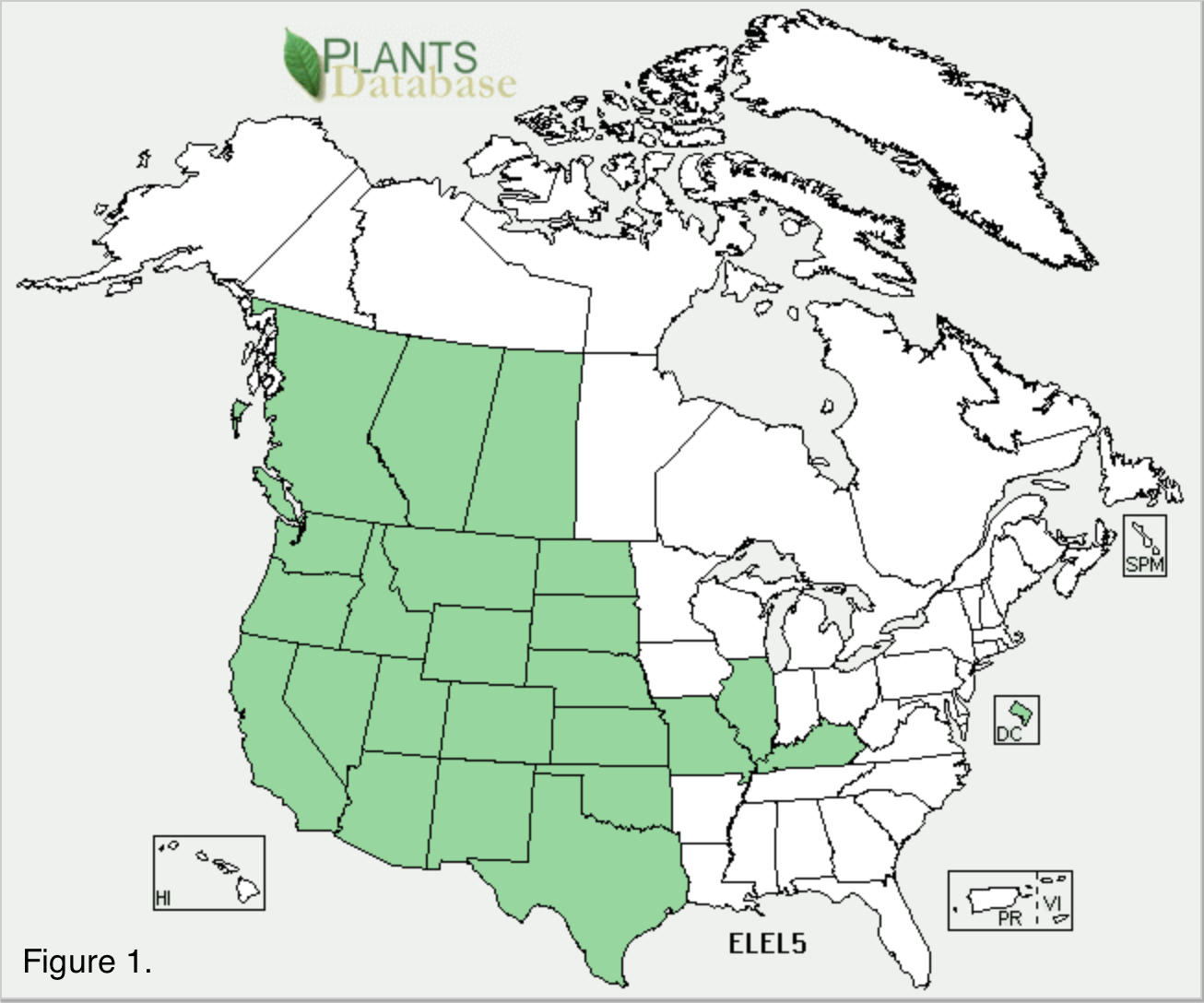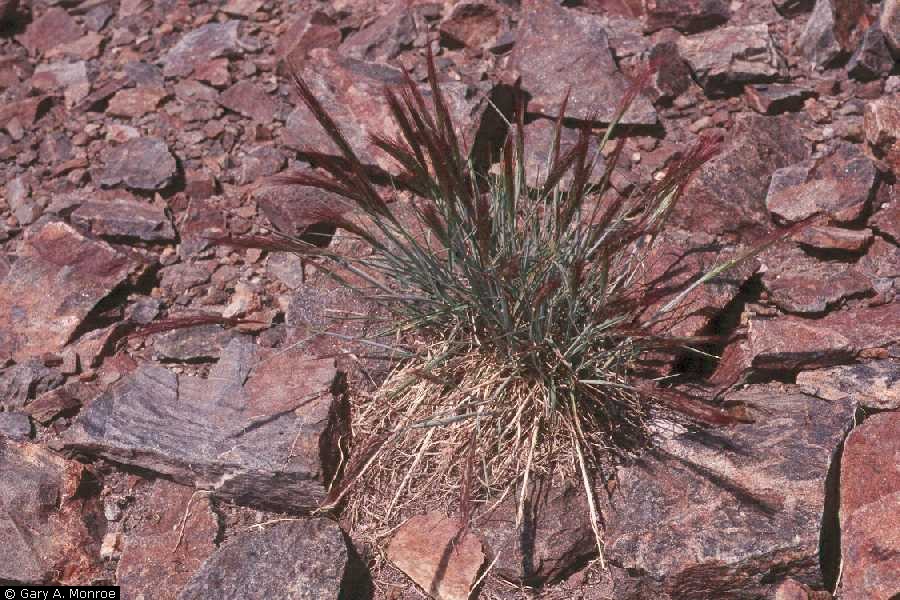Habitat and Geography
Elymus elymoides grows in a wide variety of habitats ranging
from the semiarid Intermountain West to low altitudes and dry
locations (Leffler 2011 and Leger 2008). The general elevation
range for E. elymoides is anywhere from 2,000 to 11,500 feet
(EOL 2013). E. elymoides ranges in geography from Canada
to Northern Mexico typically toward the Western half of North
America (Figure 1, Parsons 2011 and USDA 2014). In the United
States, E. elymoides is most common at low to middle altitudes
growing in areas such as California, Nevada, and Utah (USDA
2014).

The nice feature about E. elymoides is that it naturally
invades locations where Bromus tectorum (cheatgrass) and
Taeniatherum caput-medusae (medusahead), invasive grasses, are
growing (Simonin 2001). This allows it to have an extremely
competitive nature amongst non-native plant species. E.
elymoides has associations with many plants such as sagebrush,
shadscale, green rabbitbrush, and mixed conifer forests (EOL
2013).
Many other organisms live amongst E. elymoides and these
organisms are animals. Animals such as Orthoptera (grasshoppers
like
Melanoplus devastator,
crickets,
katydids), Auchenorrhyncha (tree hoppers,
spittle
bugs,
cicadas), and Sternorrhyncha (plant lice,
whiteflies) all prey on E. elymoides as a means for
their nutrition. This interaction causes damaging effects to this
grass. To find out more about E. elymoides and the interactions
it has with other organisms it lives and competes with, visit
the
interactions page (EOL 2013).
E. elymoides is a low maintenance grass because it only needs on
average five inches of rain or more per year and grows in any type
of soil ranging from fine to coarse soils as shown below (USDA 2006).

Return to the
Classification page, or continue on to the
Form and Function page.
Return to Home Page